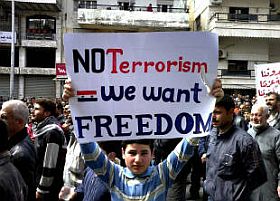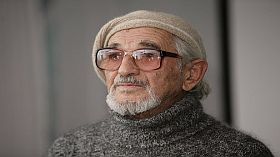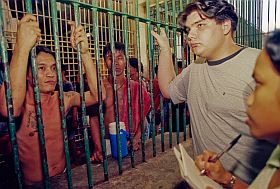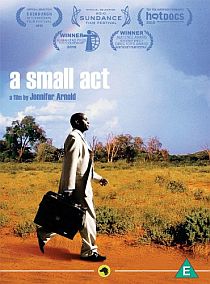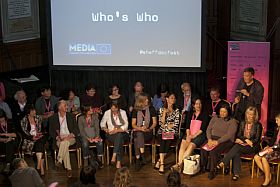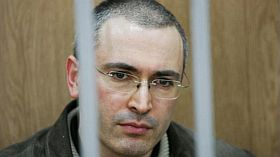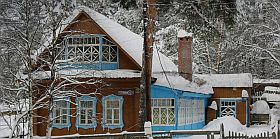


News from Paris: Goodbye Mubarak!

This blog has followed with great interest the popular uprising in the Arab world, the good news and the bad news. Coming home to Paris after the vacation, the first results of how the situation translates into films are starting to come out. Here are two of them, both regarding Egypt, surely there are others and much more will come, hopefully many Arab voices too.
Goodbye, Moubarak!, written and directed by Katia Jarjoura, was filmed before and during the elections in Egypt in November and December last year. The crew worked under very difficult circumstances, filming without official authorization in a dictatorship, that nobody knew at the time where about to take its last breaths. We get to meet the heroic hardworking opposition, hear the hair-raising, nearly hilarious discourse of the official political power and get a rare insight of the Egyptian society just before it all cracks up; the repression, the exasperation, the fear and the courage. As Katia Jarjoura mentioned at the preview of the film at la Scam Tuesday night, this film was thought to be visionary, instead it became a historical document! The story of the film is of course told through this new perspective and gives an instructive view of the background of the revolution and its different protagonists and stakes. I highly recommend that you take a look at Arte on Wednesday night September 21 if you have the possibility.
And to follow up on the story of Egypt, I very much look forward to see Tahrir Liberation Square by Stefano Savona, screened at the Locarno Film Festival this year. The film will now be shown on Monday September 19th for the first time in Paris in the always-interesting bar, Le 61, a convivial meeting-place for…
journalism, photography and cinema, in presence of the director and with film critic Jean-Michel Frodon running the debate afterwards.
Stefano Savona (who won the Cinéma du Réel Grand Prize 2011 for his film Palazzo delle Aquile) filmed alone at the Tahrir square in Cairo from January 30th to February 12th and the fall of Mubarak using his Canon 5D Mark II camera. I quote Frodon from his blog Projection Publique at Slate.fr: Neither journalistic, nor historian, his truly artistic gesture is exemplary of the possibilities to think the present through the specific resources of cinema. These possibilities are so rarely realized: we have film archives of the great events of the century, but only very few cinematographic works has been elaborated in the very moment of their occurrence (my translation).
Goodbye, Moubarak! (France, 2011, 72 min.) by Katia Jarjoura, prod. AMIP/Arte France. On Arte, Wednesday September 21, 20h40 (also September 22, 10 a.m. and October 3, 2h30 a.m.):
Goodbye, Moubarak! (France, 2011, 72 min.) by Katia Jarjoura, prod. AMIP/Arte France. On Arte, Wednesday September 21, 20h40 (also September 22, 10 a.m. and October 3, 2h30 a.m.): Link to arte.tv
Tahrir Liberation Square (France/Italy, 2011, 93 min.) by Stefano Savona, prod. Picofilms and Dugong Productions in association with Rai 3.
Trailer: http://www.tahrir-liberationsquare.com/trailer.html
Review by Jean-Michel Frodon (in French):
http://blog.slate.fr/projection-publique/2011/08/10/tahrir-locarno-ce-que-voit-le-cinema/
Screened Monday September 19th, 20h, in Bar Le 61, 3 rue de l’Oise, 75019 Paris:
http://www.61paris.fr/2011/09/11/stefano-savona-tahrir-liberation-square/

